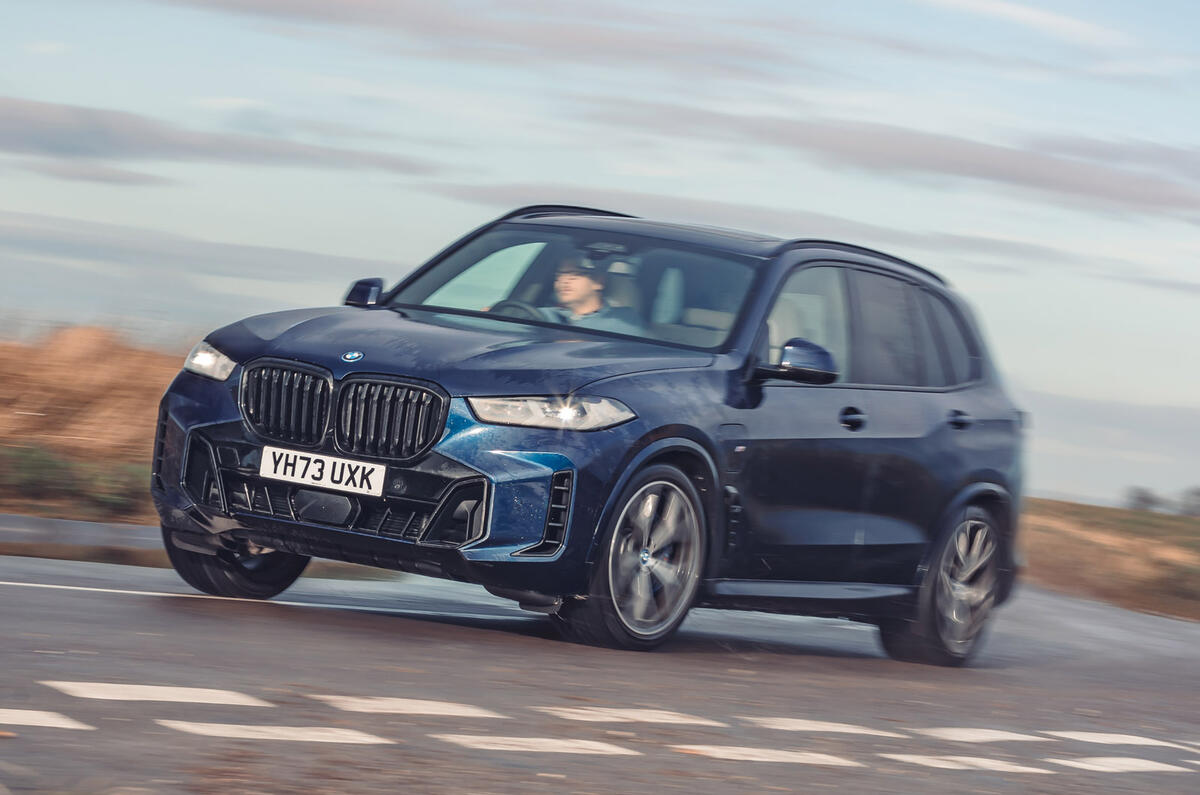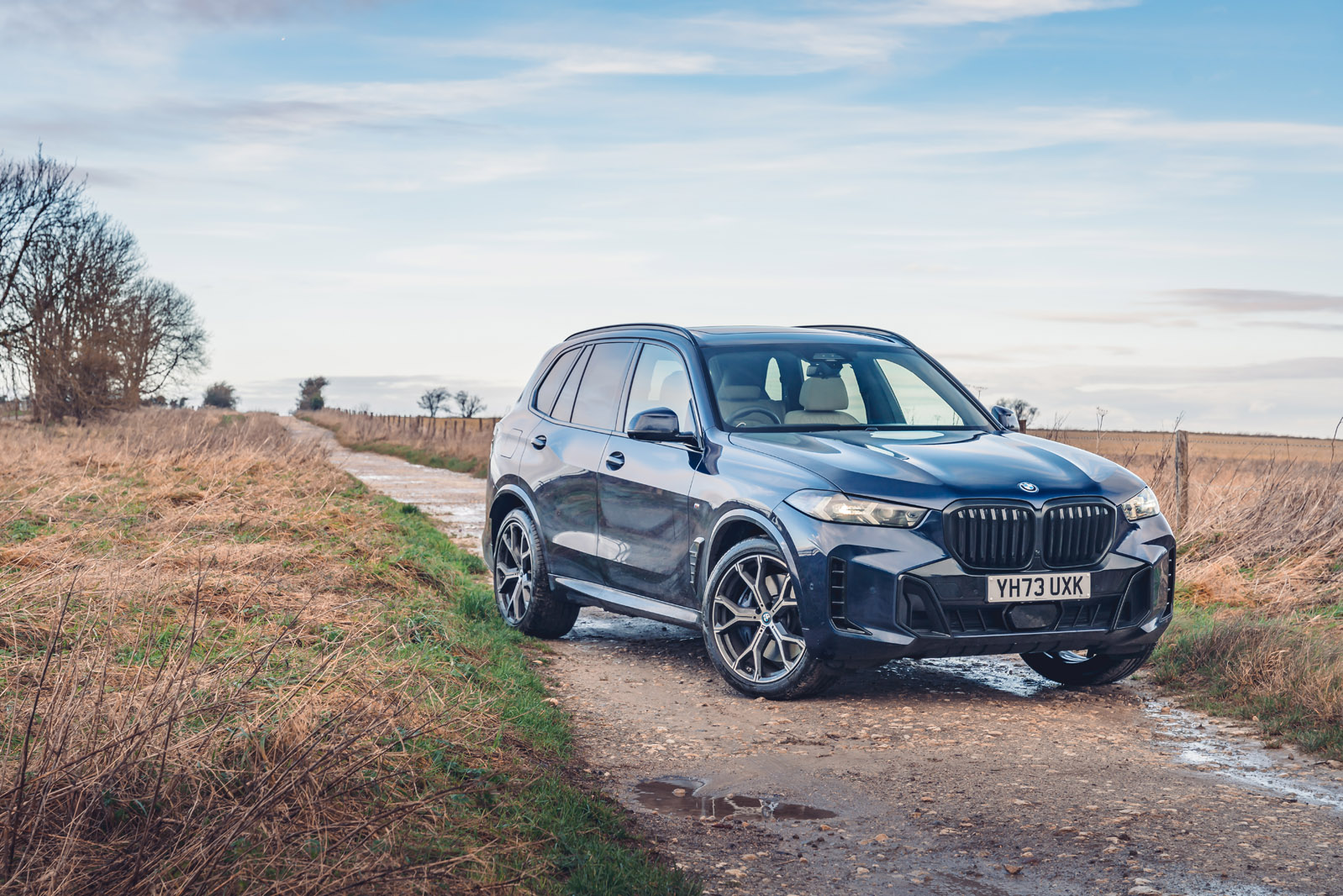When we road tested the X5 in 2019, we drove the xDrive 30d. More recently, we’ve run the numbers on the xDrive 50e plug-in hybrid.
BMW X5 xDrive 30d

About the 30d, we noted that its entry-level positioning suggests a modesty about the quantity and quality of this car’s performance that’s a bit misleading.
The inclusion of a launch control function seems frivolous on a car like this, but nevertheless it enabled this 2279kg entry-level diesel SUV to sprint from a standstill to 60mph in a fairly fleet-footed 6.6sec two-way average. Not only is that on a par with the likes of the Volkswagen Golf GTI, but it’s also 0.3sec quicker than the Audi Q8 50 TDI we road tested in 2018. Proof that BMW still doesn’t do ‘ordinary’ when it comes to its six-cylinder diesel engines.
The manner in which that acceleration is delivered is smooth and contained yet strong and seamless, that initial surge of torque as you come off the brake pedal possessing something of a tidal feel, and propelling the X5 forward with no shortage of conviction. That conviction begins to wane a little as you approach the upper rev range, but only enough to remind you that it’s a diesel you’re driving; while the bassy rumble that initially permeates the cabin morphs into a more overtly diesel-derived engine note.
The updated 30d has gained mild-hybrid assistance, which allows the car to coast with the engine idling for extended periods under a trailing throttle. In combination with a few internal changes, that ups the power from 261bhp to 282bhp. When we drove the updated car at its launch, we noted sharper throttle response and greater flexibility to the delivery.
If your X5 will be a heavy-duty tow vehicle, you’ll want to stick with the diesels and their 3500kg capacity. That said, the plug-in hybrid’s 2700kg rating is hardly shabby.
BMW X5 xDrive 50e

If your X5 will be a company car tasked mainly with the daily grind, then the plug-in hybrid will be almost impossible to ignore thanks to its 64 miles of electric range and accordingly low company car tax bill. It’s a good thing, then, that this is possibly the most impressive plug-in hybrid system we’ve experienced.
We managed 51 miles in near-freezing temperatures before the engine was forced to kick in. That means most owners could easily do their daily miles purely on electric power. With the old 45e, that would leave you with a 2.4-tonne SUV with 111bhp – hardly the effortless experience you expect from a luxury car. The 50e’s 194bhp makes it much more pleasant to drive in electric mode, with a 0-62mph time of around 10sec. It’s no performance car in EV mode, but even merging onto a busy motorway doesn’t present any problems.
Mind you, to drive around with a straight six effectively as dead weight feels somehow wasteful. Hybrid mode doesn’t really stop that sensation, because it prioritises electric running and the engine will rarely kick in during normal use. Even when it does, a lot of the time you’ll only notice it because the electric range readout on the driver display turns from blue to white. The handover is rarely anything other than smooth.
That the X5 50e has a combined output of 483bhp is almost an accidental by-product of giving the X5 enough electric power to make it a passable EV, and then supplementing it with a sufficiently smooth and grunty engine. But make no mistake: when both power sources combine forces, they create an exceptionally rapid SUV. We measured 4.7sec to 62mph on a cold, slightly slippery surface. That’s only a few tenths behind what the previous-generation X5 M recorded in 2015. The hybrid actually beats the old X5 M in the 30-70mph in fourth gear flexibility test: 4.8sec versus 5.3sec.
At higher revs, the 3.0-litre straight six sounds slightly more strained and gravelly than it does in unhybridised applications, but we’re still talking about one of the most sonorous engines on the market, one that the 2.0-litre four-cylinder in the Mercedes GLE 400e can’t begin to match.








































































